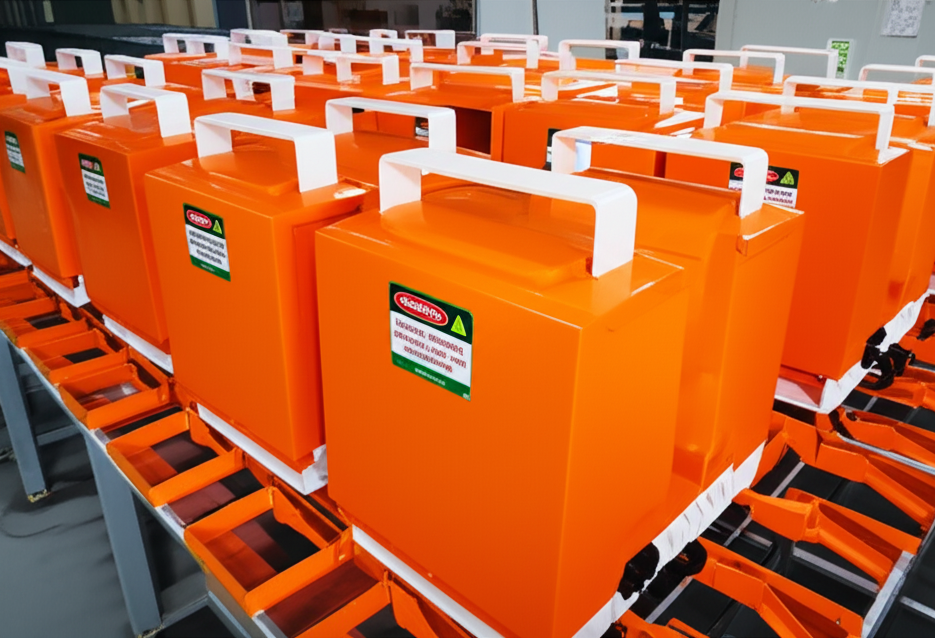Kingsgrove Branch:
Temporary Power Board

Temporary power board: It's more than just a plug. Imagine a construction site buzzing with activity, a festival brimming with music and light, or a home under renovation. What powers it all? Often, it's a temporary power board, a versatile and crucial tool for countless situations. This guide dives deep into the world of temporary power boards, covering everything from their diverse applications to essential safety precautions
Get ready to power up your understanding
This guide provides a comprehensive overview of temporary power boards, outlining their various types, functionalities, and safety considerations. From portable generators to power strips and inverters, we'll explore the technical specifications and practical applications of these essential tools. We'll also delve into crucial safety measures and maintenance tips to ensure safe and reliable use
Temporary Power Boards: A Comprehensive Guide
Temporary power board are essential for a wide range of situations, from construction sites to outdoor events. This guide covers everything you need to know about these versatile tools, from their basic components to safety considerations and maintenance
Introduction to Temporary Power Boards
Temporary power boards provide a reliable source of electricity for various applications where a permanent connection isn't feasible or practical. They come in diverse forms, each with specific strengths and weaknesses. Understanding these differences is crucial for selecting the right board for your needs. Different types offer varying wattage, portability, and safety features, impacting the cost and suitability for specific jobs
Types of Temporary Power Boards
Temporary power solutions include portable generators, power strips, inverters, and more. Each has unique characteristics:
- Portable Generators: These are powerful, but often less portable than other options. They're excellent for large-scale projects, offering high wattage but requiring fuel and more space. Safety features are crucial, including proper grounding
- Power Strips: Simple and affordable, power strips are best for low-wattage needs, like charging phones or powering small appliances. They are highly portable but limited in their capacity
- Inverters: These convert DC power (like from batteries) to AC power. They're useful for situations with limited or no AC access, but their output capacity is often less than generators. Their portability depends on the size of the battery bank
Components and Functionality
Temporary power boards typically consist of a power source, distribution panel, and safety features. Understanding these elements helps in proper operation and maintenance. Different power sources offer various advantages and disadvantages
- Power Sources: Generators use fuel, while inverters rely on batteries. Power strips typically connect to existing AC power
- Voltage and Amperage: The voltage and amperage capacity of the board dictate how much power it can deliver and which devices it can support
- Safety Features: Circuit breakers, grounding systems, and overload protection are vital for preventing accidents and damage
Applications and Use Cases
Temporary power boards are essential in numerous situations, supporting everything from lighting on construction sites to powering equipment during events. They are crucial in emergencies and for temporary installations
Safety Considerations and Regulations
Proper grounding is critical. Local building codes and industry standards dictate specific requirements. Improper use can lead to serious hazards
- Safety Precautions: Always follow the manufacturer's instructions and local safety guidelines.
- Regulations: Ensure compliance with relevant codes and standards
- Potential Hazards: Improper grounding, overloading, and ignoring safety features can cause fires or electric shocks
Maintenance and Troubleshooting, Temporary power board
Regular maintenance, including cleaning and inspections, is essential for prolonged use
- Maintenance Procedures: Follow the manufacturer's instructions for cleaning, inspection, and regular checks
- Troubleshooting: Identify common problems and solutions
- Professional Help: Seek professional help for complex issues
Cost and Selection Criteria
The cost of temporary power boards varies greatly depending on the features and capacity. Several factors influence the selection process
- Cost Considerations: Balance cost with features and capacity
- Selection Factors: Consider power requirements, portability, and safety features
- Reliability and Durability: Evaluate the reputation of the manufacturer and the quality of construction
Wrap-Up
In conclusion, temporary power boards are indispensable for a wide array of applications, from emergency situations to everyday tasks. Understanding the different types, their functionalities, and the essential safety precautions is crucial for safe and efficient use. Remember to prioritize safety, choose the right equipment for the job, and always consult the user manual for specific instructions. By doing so, you can maximize the benefits of temporary power boards and ensure a smooth operation in any setting. See front gate intercom
Happy powering
FAQ Corner: Temporary Power Board
What are the common safety precautions when using temporary power boards?
Always ensure proper grounding, use circuit breakers, and avoid overloading the board. Inspect the equipment before each use, and never use a damaged or faulty board. Keep children and pets away from the power source, and follow local electrical codes
What are the different types of temporary power boards available?
Common types include portable generators, power strips, and inverters. Generators provide power from fuel, power strips distribute existing power, and inverters convert battery power to usable AC power. Each has unique features and capabilities, and choosing the right type depends on your needs
How do I select the right temporary power board for my needs?
Consider the wattage required, the portability needs, and the safety features. If you're unsure, consult an electrician or refer to the detailed specifications. A suitable power board will handle the load without overloading or causing damage
What are the common troubleshooting steps for temporary power board malfunctions?
Check for loose connections, ensure proper grounding, and verify that the circuit breaker isn't tripped. If the problem persists, consult a qualified electrician. Don't try to fix complex issues yourself
Recent posts

Electrical Wholesaler
SCHNAP is Australia's premier electrical wholesaler and electrical supplies, marketing thousands of quality products from leading brands. Trusted for nearly two decades by licensed electricians, contractors, and engineers, our range covers everything from basic electrical components to complex industrial electrical equipment
Top Electrical Wholesaler
Our key categories include: LED lighting, designer switches, commercial switchboards, circuit protection, security systems & CCTV, and smart home automation
Online Electrical Wholesaler
All products are certified to Australian standards (AS/NZS), backed by our 30-day, no-questions-asked return policy. Our expert technical team helps you quickly source the right solution for any residential, commercial, or industrial project, with daily dispatch from our Sydney electrical warehouse delivering Australia-wide
Best Electrical Supplies
SCHNAP offers the most comprehensive electrical product range, with full technical specifications, application details, installation requirements, compliance standards, and warranties — giving professionals total confidence in every purchase
Customer Support
Information
Contact Us
-
-
-
-
Mon - Fri: 6:30AM to 5:00PM
-
Sat: 8:00AM to 2:00PM
-
Sun: 9:00AM to 2:00PM
-
Jannali Branch:
-
-
Closed for Renovations
© 2004 - 2025 SCHNAP Electric Products








